The Netgear Arlo Pro 2 Wire-Free Security Camera is part of the next generation of the company’s Arlo Pro camera line, which is highlighted by higher-quality 1080p HD video, a compact design for discreet placement, and Amazon Alexa support for live monitoring of cameras from the Echo Show and TVs connected with FireTV. The Arlo Pro 2 also features a weather-resistant build, allowing it to be placed virtually anywhere, while its solar panel (which is sold separately) gives the batteries a full charge with only a few days of full sunlight.
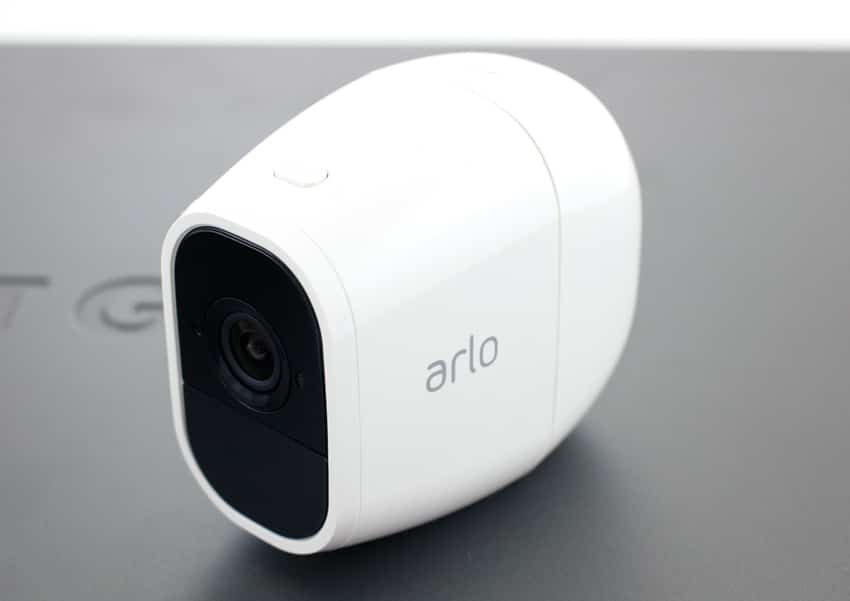
At first glance, the new Arlo Pro 2 camera keeps all of the strengths of the Arlo Pro and makes it even better. Users gain double the image resolution and a wider-angle lens. When we swapped out cameras in our test environment, the increased field of vision was immediately evident and without image degradation. The wider lens immediately takes advantage of the better image sensor, allowing the same camera positions to view a broader field of vision. Battery life is roughly the same as the Pro, where consumers will see about a 30-50% battery depletion in a 2-3 week period during spouts of heavy use (i.e. tens of videos a day ranging from 15-50 second clips at a balanced video quality profile). Obviously being a battery-powered device, battery life is very much dependent on user settings such as video quality, length of recording time each day, and how frequently the cameras are triggered.
Plugging the Arlo Pro 2 in via a power cable unlocks a range of useful advanced features. For example, motion detection switches from IR (limited in scope and distance) to tracking individual pixels from the video camera itself. This allows for a more comprehensive look when viewing activity as well as finer motion sensitivity for user-defined zones. Users will be able to disregard data from some spots, such as a window, while putting more focus on others, such as hallways or main room in the video frame. When plugged in, users will also be able to receive motion and sound alerts, with the ability to capture activity three seconds before a triggered event, which comes in handy when you want to know the full story of what happened.
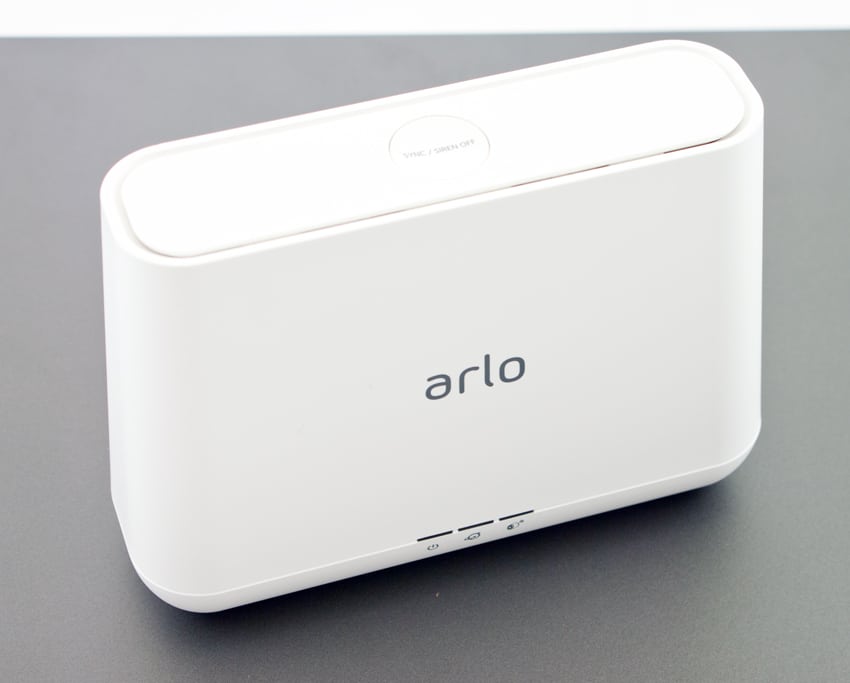
Local backup of video is included with the Arlo Pro base station, which records each video clip to a USB thumb drive if connected. This is quite helpful in situations where you want to keep a constant record of what is taking place at a location, even if the internet connection drops during a recording event. Local videos do require manual intervention to view, although that simply means users would plug the thumbdrive into another computer and manually load the video file that way.
Arlo Pro 2 Wire-Free Security Camera Specifications
Camera
- Resolution: up to 1080p HD
- Format: H.264
- Field of view: 130°
- Night Vision
- 850 nm LEDs: illuminates up to 25 feet
- 8x digital zoom
- 5 simultaneous video streams
- Audio: Speaker and Microphone
- Frequency: 2.4GHz
- Range: Up to 300 feet line of sight
- Wire-Free motion detection
- Passive infrared technology
- Adjustable up to 23 feet
- Plugged-in motion detection
- Video-based technology
- Up to 3 activity zones
- 3-second preview
- Adjustable sound detection
- Automatic email alerts and push notifications
- Rechargeable battery and AC power options
- Battery life varies based on settings, usage, & temperature
- Weather-resistant
- Operating temperature: -4° to 113° F (-20° C to 45° C)
- IP65 rating
- Amazon Alexa, SmartThings®, IFTTT® and more
Base Station
- WiFi
- Frequency: 2.4GHz 802.11n
- Range: 300 feet line of sight
- Siren: 100+ dB output
- Ethernet interface port
- Indicator LEDs:
- Power
- Internet
- Camera
- IP Configuration DHCP
- Internal antenna
- Processor & Memory:
- 900MHz ARM Cortex A7
- 128MB flash; 128MB RAM
Consumers will have multiple options when purchasing the Arlo Pro 2: 4-camera or 2-camera bundles, which is priced at $799.99 and $479.99, respectively as well as cameras sold individually. The 2-camera bundle comes with two Arlo Pro 2 smart security cameras, two Rechargeable batteries, one base station with a built-in siren, one indoor power adapter, one indoor power cable, one Ethernet cable, and two wall mounts. The larger bundle comes with all of this plus additional cameras, wall mounts, and Ethernet cables as well as outdoor components.
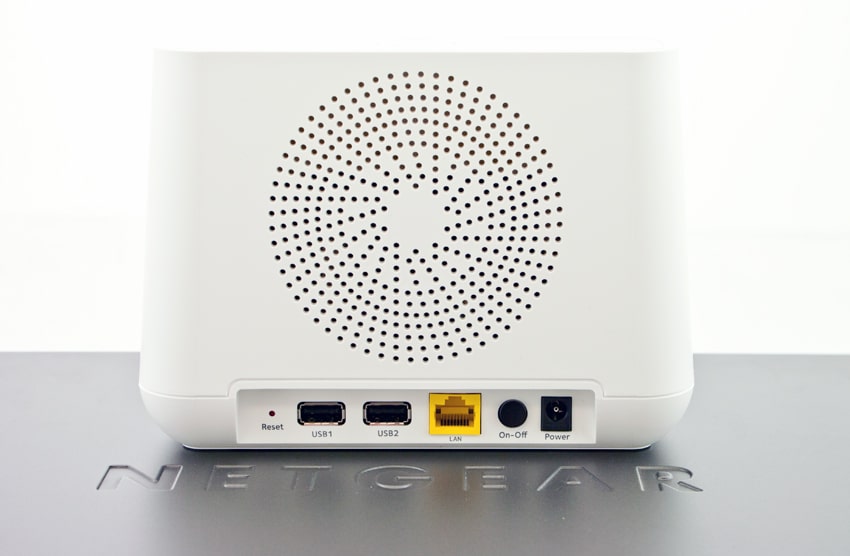
Setting up the Arlo Pro 2 is quick and easy out of the gate. If you’re using the camera wirelessly, you simply have to press and hold the latch to unlock the battery compartment and insert the Netgear battery. With the first use, you’ll want to fully charge the battery before you deploy the camera. When plugged into the USB power adapter, the cameras show a blue LED when fully charged.
Syncing also gave us no trouble at all. Placing the camera near the base station, all you have to do is press the Sync button on the base station and wait for the Sync status LED to blink green then press the sync button on the camera for about two seconds. The blue LED confirmed the syncing almost instantly. Netgear recommends you sync the camera next to the base station, but this isn’t a hard and fast rule. We’ve successfully paired cameras far away in their final mounting spot.
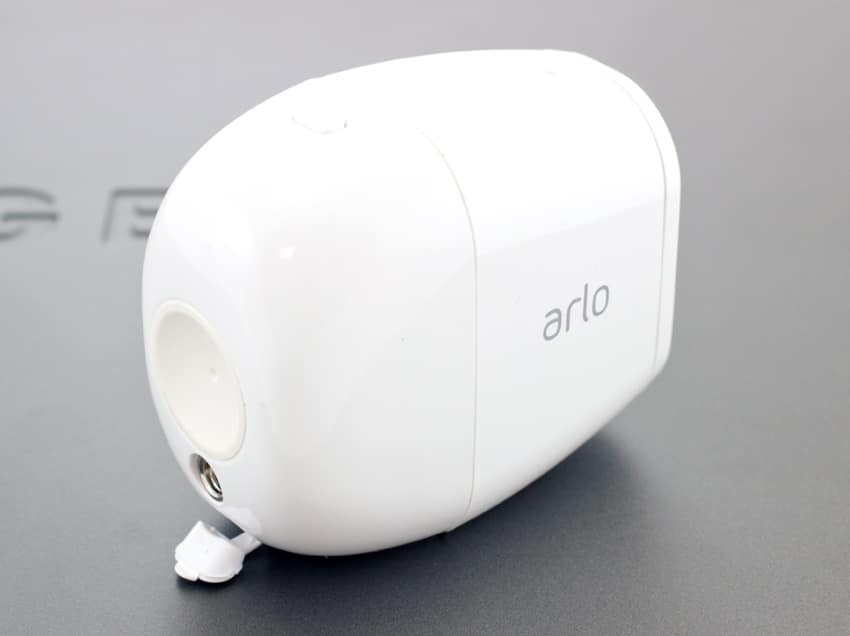
Once everything powered up and ready (i.e. the Power and Internet LEDs are both lit to solid green), download the Arlo app to your mobile device (or go to Netgear.com on the PC) and then log in to your account (or create one if this is your first Arlo product). Next, follow the onscreen steps to add the base station to your account. The Arlo App is as simple and streamlined as it gets for surveillance. It allows you to easily view and manage your camera feeds at any time and from anywhere.
The web-based application is virtually the same as the App; the interface is extremely responsive, clean and easy to navigate. Getting the information we wanted was swift and painless.
As you can see below, our four test cameras are nicely laid out after clicking the Devices section, each of which has icons that depend on how you set up your rules and how the camera is connected. From here you view the individual live feed; just click the specific camera and you’ll also have further options such as pausing, panning, and zooming.
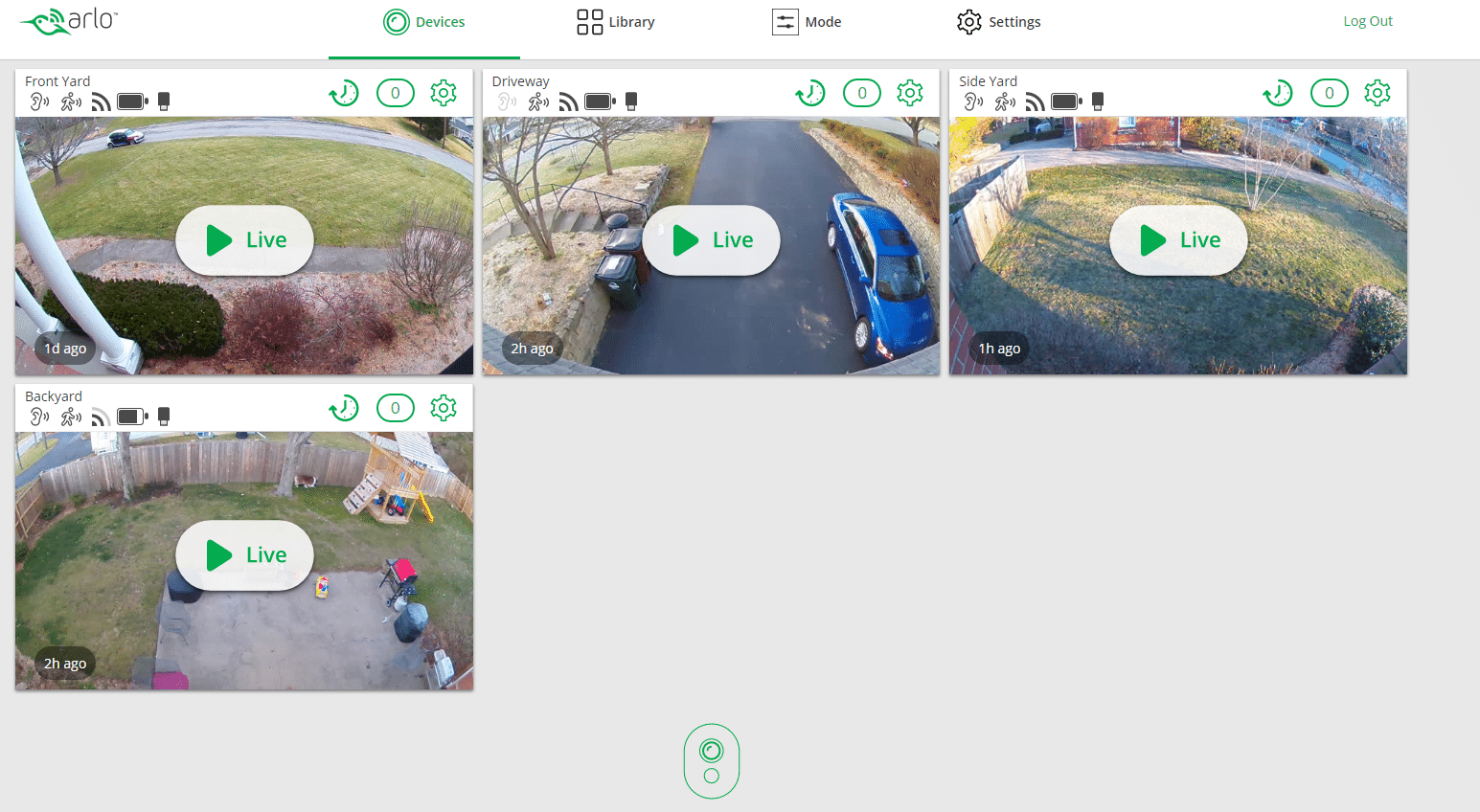
The Library section lists all clips that have been recorded based on predetermined settings. In this instance, we see all events where the cameras have sensed some type of motion. Users can change the sensitivity level for each feed by simply going into the individual settings for the camera. To view the motion event, simply click on the event and it will give you a before, during, and after story of what happened.
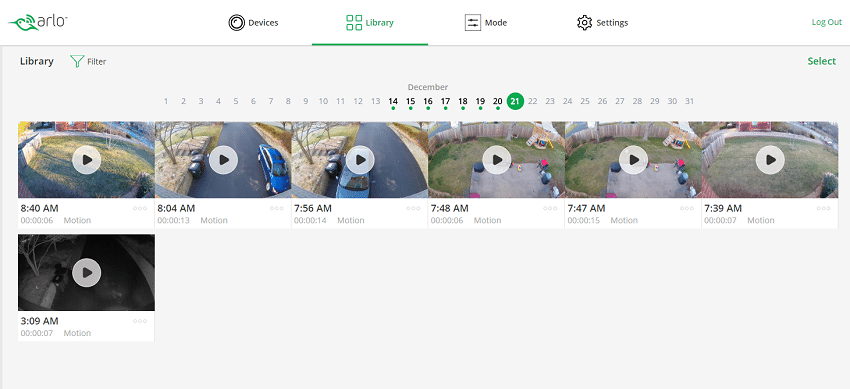
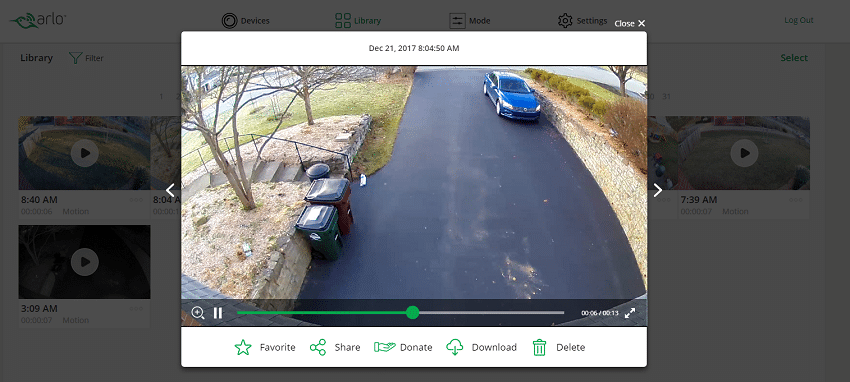
Arlo offers a pretty generous peace of mind for your recordings via their free cloud storage for the life of the camera (they store recordings created by the camera motion detection feature for 7 days), while proving the option to download recordings to mobile devices or computers for a more long-term backup solution. Users also have the choice of paying to store recordings in the cloud for the last 14 days or 30 days.
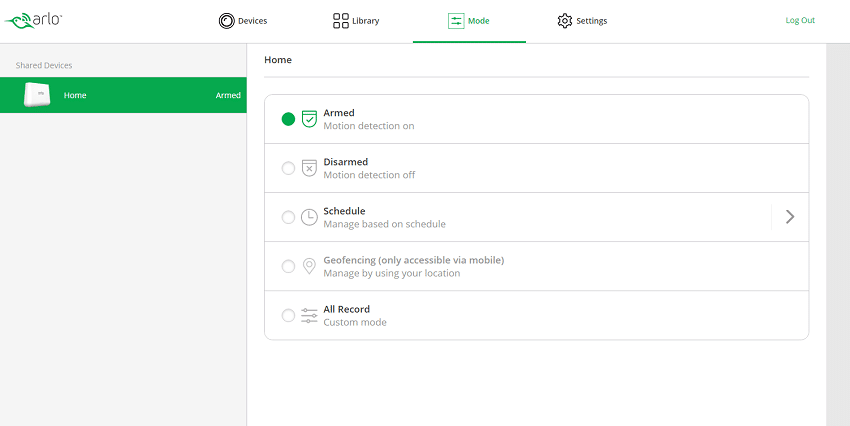
The Mode section allows users to change rules so they can customize and control automated actions, taking away the need for unnecessary micromanaging. Modes include:
- Armed: This enables auto Detection for a specific camera.
- Disarmed: This enables disables Detection for a specific camera.
- Schedule: Users can manage detection based on a schedule.
- Geofencing: This allows users to arm, disarm, or resume a schedule mode when arriving at or leaving a specific location based the where a person’s mobile device is located.
The Settings section allows you to apply a range actions on Arlo cameras. Just click the specific camera from the Shared Devices list and you will be able to change the name, turn the camera on or off, check the battery level, find out which station it is connected to and display other useful information.
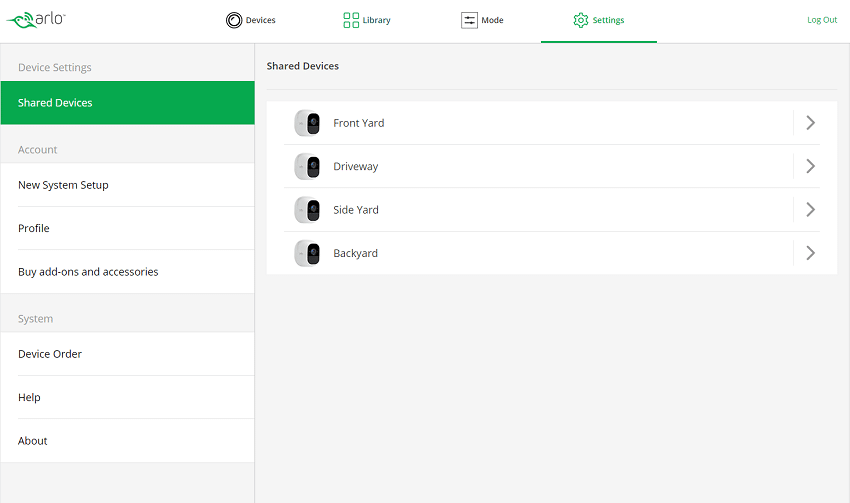
Conclusion
NETGEAR has continued to impress with additions in its Arlo line. Most recently, the company has introduced the Arlo Pro 2 Wire-Free Security Camera. The camera comes will all of the features that made the initial Arlo Pro great, such as ease of use and a small form factor that is simple to install, adjust, and move. The newest cameras come with higher quality video capture (up to 1080p now) and support for Amazon Alexa. The new support for Alexa allows for live monitoring of cameras from the Echo Show and TVs connected with Fire TV or Fire TV Stick. The new cameras also come with a wider-angle lends giving users an increased field of vision. Alro Pro 2 cameras have built in two-way speakers, ideal for listening in on motion-based events or communicating to someone through the camera.
Adding the new cameras was simple. The new wireless cameras are compatible with the previous versions’ mounts so one simple has to sync the camera with the press of a button on the camera and base unit, set it up in a mobile app, and then place the camera where desired (in this case replacing the older cameras). The app is intuitive and most users will be able to figure it out and have everything set up in as little as 15-30 minutes.
The new cameras give users an even wider view and the ability to record a bit earlier when plugged in. The Arlo Pro 2 comes with the same 7-day free cloud storage though users can buy larger plans or add a USB connected device to the base for further storage. The only downside is recharging the batteries, but the batteries themselves open up more mounting configurations that wouldn’t be possible if they were plugged in. Users either have to take the camera down and plug it in, swap out the battery with an already charged one, or buy separate charger like the solar panel offered by NETGEAR. Either way, if planned properly the batteries can be swapped out with no real interruption in the service.
The Bottom Line
NETGEAR has added great new features to its Arlo Wireless Cameras while still keeping them simple to use and install in just about any location.




 Amazon
Amazon